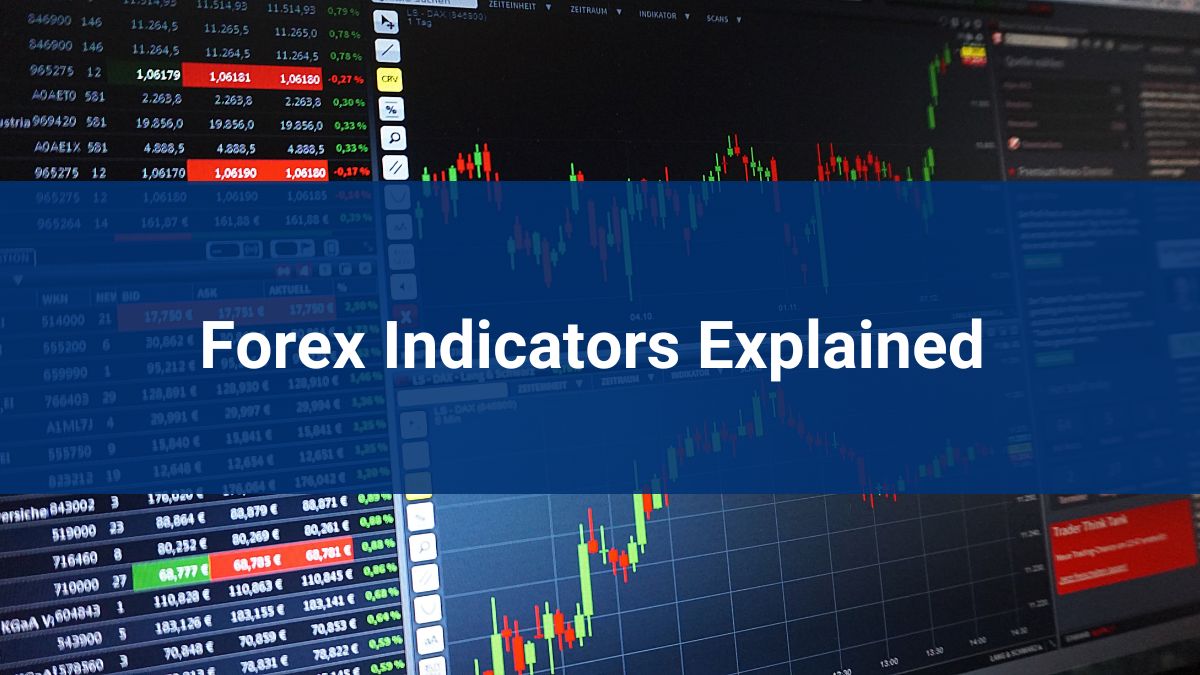
Success in Forex trading directly depends on a trader’s ability to assess the situation correctly and predict price movements in one direction or another. Whether trading is done entirely manually or using EA Forex, the key skill leading to financial prosperity in trading is working with technical indicators and fundamental analysis.
What are Forex indicators?
A FX indicator is a tool that analyzes a historical snapshot of data and the current situation. Based on predefined mathematical models, it determines the market condition at the current moment and within a specified timeframe. Relying on this information, a professional can make more informed and measured trading decisions.
Below are the main Forex indicators explained, and even if you are a novice, you can understand how to work with this toolkit and make it your best financial advisor. Note that technical indicators vary widely, and the choice of signals to focus on often depends on the selected strategy, trading style, and even the market. Choose those that best reflect the market’s condition and provide you with the most useful information — it will be an excellent decision.
What Information Do Technical Indicators Provide?
- Indicate whether the trend is upward or downward.
- Offer trading signals to enter or exit positions.
- Demonstrate support and resistance levels on the chart, providing a better understanding of the market situation.
Remember, you don’t need to use too many indicators for your work. A few, or even 1-2, can be entirely sufficient.
Types of Forex Indicators
In general, there are 4 types of indicators in Forex:
- Trend indicator Forex
- Volume
- Momentum (oscillators)
- Volatility
There is a special category of indicators that combine features of several types. For example, MACD is traditionally considered a trend indicator, but it is also considered a momentum indicator. Similarly, RSI is an indicator that is both impulsive and volatile.
Trend indicators allow you to timely notice trends in the market and trade with the trend or close deals promptly as soon as there are indications that the trend will change. Among trend indicators, you will see SMA, SAR, EMA, ADX, ADX, and MACD lines.
Momentum indicators relate to the speed of changes in security prices and demonstrate levels of overbought and oversold. The most famous oscillators are the stochastic oscillator and the RSI. How to use stochastic indicator in Forex trading? By measuring momentum, the oscillator compares a specific closing price with the price range over a selected period, and based on this, the trader can make an approximate forecast regarding the further movement of prices. Stochastic is displayed in a range from 0 to 100, where a reading above 80 signals overbought asset, and below 20 — oversold.
Volatility indicators help the trader determine the direction of the market and its moods, predict the future price movement, and even show the volume behind the price movement in one direction or another. Market volatility is measured by indicators such as ATR, ATI, and Bollinger Bands.
Volume indicators allow you to notice not only price movements but also the number of traders following them. This allows you to see collective sentiments, which may be based on various reasons: breaking news, economic data, and so on. However, it is worth noting that this information is provided only within the framework of trading with one broker and does not reflect the sentiments of the entire market as a whole, so such indicators may not be very accurate.
How to use indicators in Forex Trading Effectively
Indicators provide approximate data and are not precise signals for entering or exiting trades. Therefore, trading effectiveness relies on additional information, including economic conditions, political news, and the ability to interpret the data correctly. Reacting to indicator signals comes with practice and experience, emphasizing the importance of demo accounts for refining trading strategies.
To effectively navigate indicators, follow these rules:
- Avoid redundancy by not using multiple indicators that provide similar information.
- Keep charts visually clean to identify relevant signals quickly.
- Resist the temptation of using multiple screens, as it can slow down decision-making.
- Customize tools for convenience and efficiency.
Selecting the Right FX Indicators
Choosing indicators is subjective and depends on your trading style, methodology, and overall strategy. There is no one-size-fits-all advice, but some indicators might work best for your case. For instance, swing traders might find momentum and trend indicators useful.
Scalpers could prefer volume indicators. And many traders use a combination of indicators to confirm signals and explore better trading opportunities.
Summary
Working with technical indicators is an integral part of the trading process. However, it’s crucial not to get stuck solely in technical analysis. Considering fundamental analysis and avoiding information overload can lead to more qualitative and effective trading. Remember, sometimes, less is more, and this rule applies here wholeheartedly.